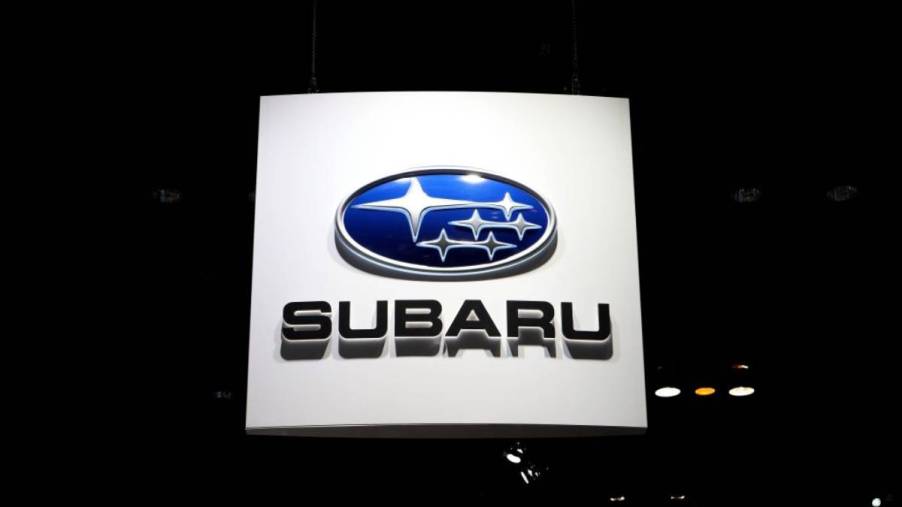
What Was the First Car Subaru Ever Built?
When you hear the name Subaru, thoughts of durability, reliability, and practicality come to mind. Subaru has spent more than 50 years refining and innovating to deliver some of the best vehicles on the market.
Subaru has a long and storied history dating all the way back to 1915, where they were creating parts for aircraft. In this article, we will look at Subaru’s history, when they first came to the U.S., and what Subaru is planning for the transportation of the future.
The beginnings of Subaru
Subaru began as the Aircraft Research Laboratory in 1915. The company changed its name to Nakajima Aircraft Company in 1932 and quickly became a key aircraft builder for Japan during World War II. Nakajima Aircraft was renamed again after the end of WWII, this time as Fuji Sangyo Co, Ltd.
With surplus aircraft components from the war, the business built the Fuji Rabbit, a motor scooter, in 1946. According to the Japanese government’s anti-zaibatsu legislation, the Corporate Credit Rearrangement Act, Fuji Sangyo was separated into 12 smaller firms in 1950.
Five of these firms plus a newly founded corporation chose to unite to become Fuji Heavy Industries between 1953 and 1955. Its automobile branch became known as “Subaru,” a Japanese term that means “unite.” Eventually, Subaru made its way to the U.S. in 1968.
The first car Subaru ever made
The first Subaru automobile was launched in 1954. The P-1 (later renamed the Subaru 1500) was the first vehicle to utilize a monocoque body designed in Japan. It was powered by a four-cylinder engine and had a front-wheel wishbone-type independent suspension.
Sales were halted owing to finance and support issues, but Subaru quickly fixed the issue and launched a sister to the P-1, the 360, in 1958. The tiny 360, dubbed the Ladybird because of its ladybug design, was tremendously popular and stayed in production for 12 years.
Subaru’s history in the U.S. market
The Subaru website states that the 360 was the first Subaru sold in the United States, and it was openly promoted as “cheap and ugly,” yet it featured the sort of engineering that Subaru is now known for.
In 1970, Subaru introduced the Subaru Star. Thankfully, it was far better looking than its predecessor while maintaining what had become a Subaru legacy of providing consumers with practicality, value, and usefulness.
Subaru had achieved an unstoppable pace by the late 1970s. Subaru of Woodbridge reports that the Japanese carmaker was winning prizes from the American automotive press and experiencing record sales. During this period, America saw its first 4WD Subaru Station Wagon, a design and configuration that Subaru still offers today.
The GL/DL, also known as the Leone in other countries, was introduced by Subaru in the early ’70s. The sedan pioneered four-wheel drive (4WD) technology, which was quickly followed by a coupe and a station wagon. Up until that point, 4WD was only available in cars designed for off-roading.
The GL and DL, which were coveted for usage in snowy and mountainous areas and benefited from the rising popularity of outdoor activities like skiing and fishing, eventually overtook all other 4WD vehicles on the market. Based on the GL, Subaru introduced the popular Brat in 1977. It was a compact pickup with a jump seat-equipped cargo bed.
Subaru continued to offer utilitarian yet quirky vehicles through the ’80s. The company made a name for itself in motorsports in the 1990s when the rally version of the Subaru Impreza won three World Rally Championships in a row.
Subaru recently celebrated its 50-year anniversary in 2018 by offering its entire lineup in the Heritage Blue color. The limited-edition models received a 50th-anniversary exterior emblem as well as more badging on the front seats and carpeted floor mats.
Subaru faces an electrified future with plans to roll out four electric crossovers by 2026, all of which will be sold in America. Subaru has stated that by the first half of the 2030s, all Subaru vehicles sold worldwide will have some form of electrification technology. By 2050, it is speculated that worldwide CO2 emissions will be reduced by at least 90 percent compared to 2010.


